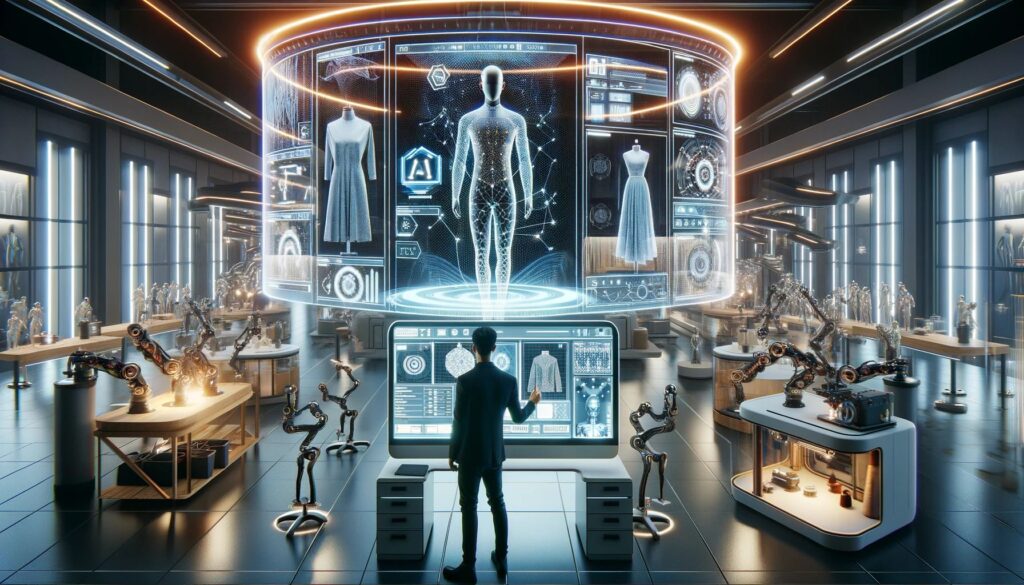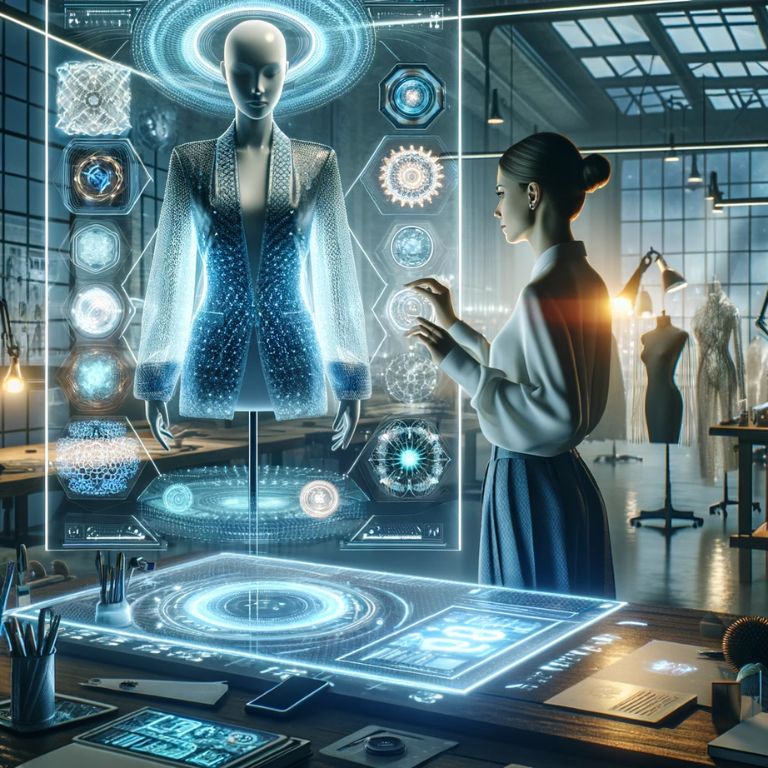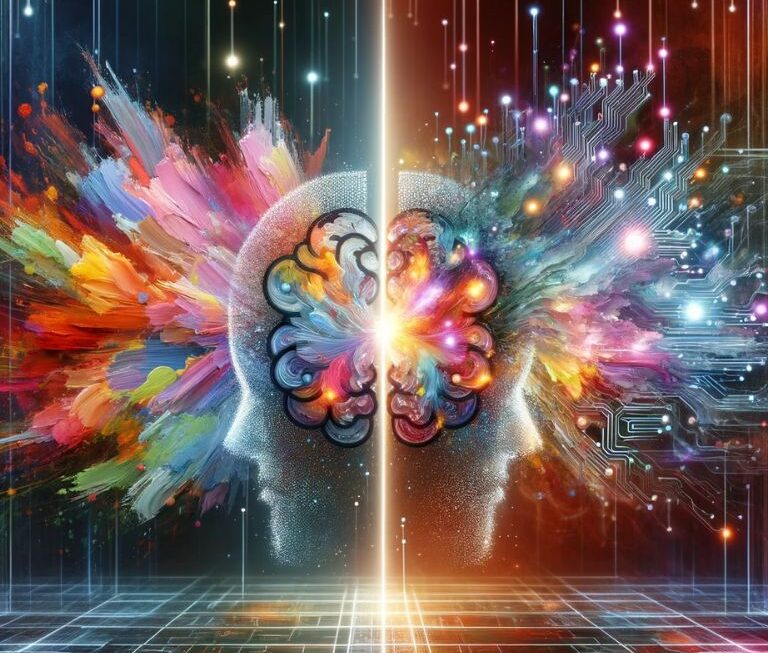The fashion industry, known for its vibrancy and constant evolution, is currently undergoing a radical transformation, thanks to the integration of Artificial Intelligence (AI). This shift marks a significant milestone in the history of fashion, where the age-old art of design meets the cutting-edge advancements of technology. AI in fashion is not just a fleeting trend; it’s a revolution that is redesigning the way we create, consume, and think about fashion.
A Brief History of AI in the Fashion Industry
The journey of AI in fashion dates back to the early 2000s when e-commerce platforms began utilizing simple algorithms for product recommendations. However, the real breakthrough came with the advent of more sophisticated AI technologies. Machine learning, deep learning, and neural networks started playing pivotal roles in various aspects of fashion, from logistics and inventory management to customer service and, most notably, design.
The Advent of AI in Fashion Design
Initially, AI’s role in fashion design was limited to assisting designers in mundane tasks, such as pattern making or sizing. As AI technology evolved, its capabilities extended far beyond these basic functions. Today, AI systems are capable of analyzing vast amounts of data – including current fashion trends, historical fashion cycles, consumer behavior, and even social media sentiments – to predict future trends and design preferences.
AI as a Design Assistant
In recent years, AI has transitioned from being a mere tool for efficiency to a creative partner in the design process. Designers are now using AI to generate unique patterns, textures, and even entire garment designs. AI algorithms can process inspiration from a myriad of sources, ranging from art and nature to urban landscapes, and translate these into viable fashion designs.
The Role of Data in AI-Driven Fashion Design
Data is at the heart of AI’s effectiveness in fashion design. By analyzing current trends, consumer preferences, and future forecasts, AI can offer invaluable insights that drive the creative process. This data-driven approach ensures that designs are not only aesthetically pleasing but also aligned with market demands and consumer expectations.
| Year | Milestone | Impact |
| Early 2000s | Introduction of basic AI in e-commerce | Enhanced customer recommendations |
| 2010s | Advancement in AI technologies | Improved logistics and inventory management |
| Mid-2010s | AI in pattern making and sizing | Increased efficiency in design processes |
| Late 2010s | AI as a creative partner | Emergence of AI-generated designs |
| Present | Data-driven AI design | Designs that align with market trends and consumer preferences |
Predicting Trends with AI
How AI Analyzes Market Data to Predict Fashion Trends
AI has become essential in forecasting fashion trends, surpassing human capabilities in processing vast datasets. It analyzes sales data, fashion week trends, social media, and real-time consumer behavior. AI algorithms identify patterns and emerging preferences, like spotting rising interest in a style or color on social platforms, signifying a potential trend. By analyzing past sales data, AI predicts future demands, aiding designers and retailers in stocking upcoming popular items, revolutionizing trend forecasting.
Examples of Accurate Trend Forecasts
- Luxury Brand Revival: A luxury fashion brand used AI to predict a vintage style resurgence, leading to a successful retro-inspired collection.
- Fast Fashion Agility: A leading fast-fashion retailer employed AI to monitor real-time consumer data and social trends, promptly adapting to the athleisure trend, boosting sales.
- Sustainable Fashion Leadership: An eco-conscious brand utilized AI to forecast interest in sustainable fashion, prioritizing eco-friendly materials and ethical manufacturing based on social discussions and trend analysis.
AI-Driven Garment Creation

Techniques Used by AI to Design Garments
AI-driven garment creation represents a groundbreaking shift in fashion design, where the process transcends traditional boundaries. Several techniques underpin this innovative approach:
- Generative Design: AI uses algorithms to generate diverse designs based on input parameters like colors and materials, speeding up the process and introducing novel styles.
- Deep Learning Style Transfer: Deep learning analyzes fashion history and cultural symbols to create innovative garments blending different styles and eras.
- 3D Modeling and Simulation: AI-driven 3D modeling enables virtual garment visualization, speeding up prototyping and reducing waste.
- Customization Algorithms: AI tailors designs to individual preferences and body types by analyzing customer data for better fit and personalization.
Examples of AI-Created Fashion Pieces
- AI-Designed Dress: A renowned designer and AI program collaborated to create a dress blending modern fashion trends with futuristic elements.
- Virtual Collection: A fashion brand launched an entire AI-designed collection, showcasing stunning and innovative garments using 3D modeling and generative design.
- Customized AI Footwear: A shoe brand used AI to offer personalized footwear, analyzing customer preferences and foot measurements for stylish, perfectly fitted shoes.
Customization and Personalization
AI’s Role in Creating Bespoke Fashion Experiences
AI has revolutionized the fashion industry by bringing customization and personalization to the forefront of the customer experience. It offers personalized recommendations by analyzing customer data, ensuring a satisfying shopping journey. Additionally, AI addresses the issue of size and fit optimization by predicting the best size for customers, while AI-powered custom design tools enable customers to co-create their designs with real-time AI feedback. Moreover, virtual try-on experiences powered by AR and AI enhance engagement and minimize returns due to fit or style concerns.
The Impact on Consumer Choice and Satisfaction
The implementation of AI in fashion customization and personalization has profound implications:
- Enhanced Customer Experience: Personalization through AI leads to a more engaging and satisfying shopping experience. Customers feel valued and understood, which builds brand loyalty and trust.
- Increased Sales and Reduced Returns: Personalized recommendations and accurate size predictions lead to better purchase decisions, resulting in increased sales and fewer returns. This efficiency is beneficial both for customers and businesses.
- Democratization of Fashion: AI-enabled customization tools make bespoke fashion accessible to a wider audience. This democratization means more people can enjoy fashion that reflects their individual style and fits their unique bodies.
- Consumer Empowerment: By involving customers in the design process, AI empowers them to express their individuality. This leads to a deeper emotional connection with the products and the brand.
Sustainable Fashion through AI

How AI Contributes to Eco-Friendly Fashion Practices
AI plays a pivotal role in advancing sustainability within the fashion industry. It aids in efficient resource management by accurately predicting trends and reducing overproduction, thus minimizing waste. Additionally, AI enhances supply chain transparency by tracking materials and processes, promoting ethical sourcing and manufacturing practices. Moreover, AI conducts comprehensive lifecycle analyses of products, identifying and mitigating environmental risks throughout their lifecycles.
AI in Material Selection and Waste Reduction
The role of AI in material selection and waste reduction is particularly noteworthy:
- Material Innovation: AI discovers sustainable materials by analyzing data on properties and sustainability metrics.
- Waste Reduction: AI optimizes cutting patterns and manufacturing processes, minimizing material waste.
- Recycling and Upcycling: AI identifies and sorts recyclables and suggests creative ways to repurpose materials.
- Energy Efficiency: AI optimizes energy use in production, reducing the carbon footprint by managing machinery and workflow.
The Integration of AI and Human Creativity
Collaborative Efforts Between Designers and AI
- Enhanced Creative Process: AI suggests unique color combinations, textures, and shapes, leading to innovative designs and enhancing creativity.
- Data-Driven Inspiration: AI provides insights from data analysis, inspiring designers to create artistically expressive and market-relevant pieces.
- Experimentation and Iteration: AI enables rapid testing of ideas, concept refinement, and exploration of design options, facilitating experimentation.
- Customized Design Solutions: AI helps designers craft personalized, bespoke fashion items tailored to individual customer preferences.
Balancing Creativity and Technology in Fashion Design
Maintaining a balance between creativity and technology is crucial in the realm of AI-assisted fashion design:
- Human Touch: Human intuition, experience, and emotional intelligence are irreplaceable in fashion design, complementing AI’s capabilities for deeper, more personal designs.
- Ethical Considerations: As AI is integrated into fashion, designers prioritize ethics, respecting intellectual property, cultural heritage, and artistic integrity.
- Sustainability: AI aids in sustainability, but human designers drive conscious choices in materials, production, and garment lifecycles.
- AI as a Tool: AI should be seen as a tool that enhances human creativity, not a replacement. The future of fashion design thrives on the synergy between AI and human vision.
Conclusion: The Evolving Landscape of Fashion Design
The fusion of AI and fashion is reshaping design, production, and engagement. AI predicts trends, crafts personalized and sustainable fashion, and fosters innovation. The future lies in a harmonious blend of technology and human creativity, striving for inclusivity, sustainability, and innovation. As AI progresses, it promises a fashion realm that’s responsible, ethical, and environmentally aware, evolving alongside human creativity to forge a socially and environmentally conscious fashion landscape, balancing aesthetics with conscientiousness.




